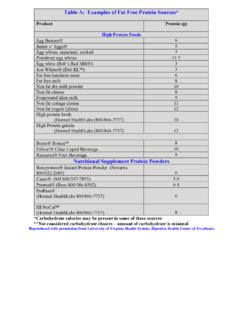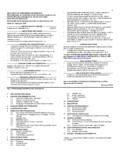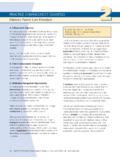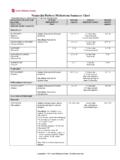Transcription of Tummy Troubles!! The overlooked pr oblem in …
1 The Gastroparesis and Dysmotilities Association (GPDA): 5520 Dalhart Hill , Calgary, AB, T3A 1S9 Tummy Troubles!! The overlooked problem in Children living with Diabetes Children with insulin dependent diabetes mellitus (IDDM) may struggle with digestive problems like: Nausea, Vomiting, Heartburn, Feeling full after a few bites of food, Stomach pain, especially after eating, Bloating, or Constipation or diarrhea. Or, stomach problems, such as delayed emptying of the stomach after a meal (called gastroparesis, gastro = stomach, paresis = weakness) might be suspected if blood glucose control has become very erratic. An adolescent diabetic child may be blamed for cheating on their diet when in fact; their stomach is not emptying properly. The typical picture seen in the diabetic gastroparetic stomach is: low blood sugar levels at bedtime with very high sugar levels by the next morning.
2 This situation is interspersed with days of good blood sugar control. So, the unpredictability of blood glucose control is the hallmark of Type 1 diabetic gastroparesis. What is delayed gastric emptying? Some specialists will reserve the term, gastroparesis, for very grossly impaired emptying of the stomach while retaining the term, delayed gastric emptying, for less pronounced evidence of impaired emptying. Both are very subjective terms and are often used interchangeably. There is no expert agreement upon use of these terms. For the most part, the finding of delayed emptying provides a "marker" for a motor (motility) disturbance within the stomach. It may, or may not necessarily be the root cause of all digestive symptoms; but it certainly plays an adverse role in affecting blood sugar control.
3 Further, gastroparesis - also know as delayed gastric emptying - is an old term that does not adequately describe all the motor problems that may occur in the diabetic stomach. Therefore, many doctors now call this condition: diabetic gastropathy. Again, gastro = stomach and pathy = disease. This term encompasses more unusual circumstances, as when the stomach may be emptying too rapidly. Many children and adolescents with Type 1 diabetes suffer with delayed gastric emptying. Delayed gastric emptying is not found exclusively in those individuals with long-standing diabetes. Gastroparesis can be evident early in the diagnosis of diabetes. Various regions of the diabetic stomach may be affected or hampered. Individual differences will exist. Each section of the stomach has specific roles to perform for optimal motility.
4 The normal stomach handles the emptying of solid and liquid foods differently. In the case of the diabetic stomach, while there may be a delay in emptying solids, usually the emptying of liquids is mostly preserved and not as adversely affected. Knowing this, one can maintain better control over widely fluctuating blood sugar levels by shifting one's diet to include more liquid-meal substitutes. What is rapid emptying of the stomach; or: dumping syndrome? Rapid emptying of the stomach may produce symptoms similar to those found in gastroparesis, usually with an additional layer of symptoms - such as shakiness, excessive perspiration, light-headedness, rapid heart beat, and a feeling of lethargy - that are unrelated to the digestive tract. This problem of "dumping" from the stomach occurs very infrequently in Type 1 diabetics, but some evidence suggests that it is not uncommon in the early stages of Type 2 diabetes.
5 And even more interestingly, for the Type 2 diabetic, the problem seems to be related to a rapid emptying of liquids and not to solid foods What are the symptoms? Generally, people who suffer from gastroparesis due to causes other than diabetes express their main symptoms as chronic nausea and vomiting. In the vast majority of diabetics however - especially in the earlier stages of diabetic gastroparesis - the characteristics of poor blood sugar control and acid reflux are often the signatures of delayed stomach emptying. As mentioned, delayed gastric emptying also leads to frequent, and possibly severe, reflux or regurgitation of stomach contents into the mouth, causing a bad taste of stomach acid. Doctors refer to this as heartburn or GERD (gastro-esophageal reflux disease).
6 Yet, frequently, it is The Gastroparesis and Dysmotilities Association (GPDA): 5520 Dalhart Hill , Calgary, AB, T3A 1S9 delayed gastric emptying - the motor disturbance in the stomach - that leads to this problem. Reflux may also cause a hoarse voice and sore throat upon rising in the morning, recurrent sinus infections, or in more severe situations, pneumonia. For the most severe forms of gastroparesis, bouts of nausea and vomiting may cycle in a pattern of flare-ups or may be a daily occurrence persisting for years. These unrelenting symptoms may cause emergency-room visits for rehydration and may lead to chronic malnutrition. There are approximately million diabetics suffering with the more severe forms of gastroparesis. Dyspepsia or gastroparesis? Both of these terms describe a problem of disrupted motility in the upper gut.
7 Sorting out the terms can be difficult since they are subjective and describe the same collection of symptoms listed above. Some doctors reserve the term, dyspepsia, for less severe symptoms, while gastroparesis is used to describe more profound symptom intensity. Regardless, when structural problems and inflammation are not found in the upper gut, the driver for the symptoms is a motor disturbance (motility problem) and or increased sensitivity of the nerves within the digestive tract. How is gastroparesis treated? Tightening up blood sugar control is vital. High blood sugar levels in themselves cause a delay in gastric emptying. Therefore, improving blood sugar control may actually improve the emptying of the stomach. Furthermore, good control over blood sugar levels prevents the complications of diabetes.
8 The primary treatment goal then for diabetic gastroparesis is to regain control of blood glucose levels, especially glucose levels after eating. Working around the gastroparetic stomach is the trick. Better blood sugar control may be achieved through dietary means, and often with the help of medications that improve the stomach's emptying power. These medications are known as pro-motility drugs. Remember your child s emotions cannot cause gastroparesis; nor is the child doing anything wrong that would prevent them from getting better. There is so much that medical science does not understand about this digestive problem; but, just like diabetes, gastroparesis can be managed. However, even with everyone s best efforts, digestive symptoms can greatly impede attempts at controlling blood glucose levels.
9 Yet, with encouragement, support and knowledge, improvement can be gained. Treatment approaches may include: Frequent testing and record keeping of blood sugars Insulin -- type and timing, Change in type and consistency of food, Switching to liquid based meal substitutes, or blenderized food. In addition, several different pro-motility drugs are used to treat gastroparesis. These medications help to reduce symptoms while improving the emptying of the stomach. Some examples: Domperidone (Motilium ) Available from Canada Zelnorm (Tegaserod) Under special access Metoclopramide (Reglan ) Significant side-effects Erythromycin (Risks related to heart rhythm problems) Cisapride (is still available under a restricted assess program) Other medications may be used to treat symptoms and problems related to gastroparesis.
10 For example; an antiemetic can help with nausea and vomiting, pain medications for abdominal pain. Anti-depressants for stomach sensitivity. The fine-tuning of blood glucose control after a meal has proven to be a critical point in the focus of diabetic care. Learning to monitor and record blood glucose levels frequently throughout the day will help your child s diabetic specialist, or primary care physician tailor the best approach for your child s personal insulin requirements in the face of delayed gastric emptying. Your diabetic specialist, or primary care physician may recommend a bolus of short-acting insulin after your meal, instead of the usual bolusing 30 to 40 minutes before eating. Also, very rapid-acting insulin may be given just prior to your next meal (as per a schedule worked out by your doctor and based upon your blood sugar reading).












